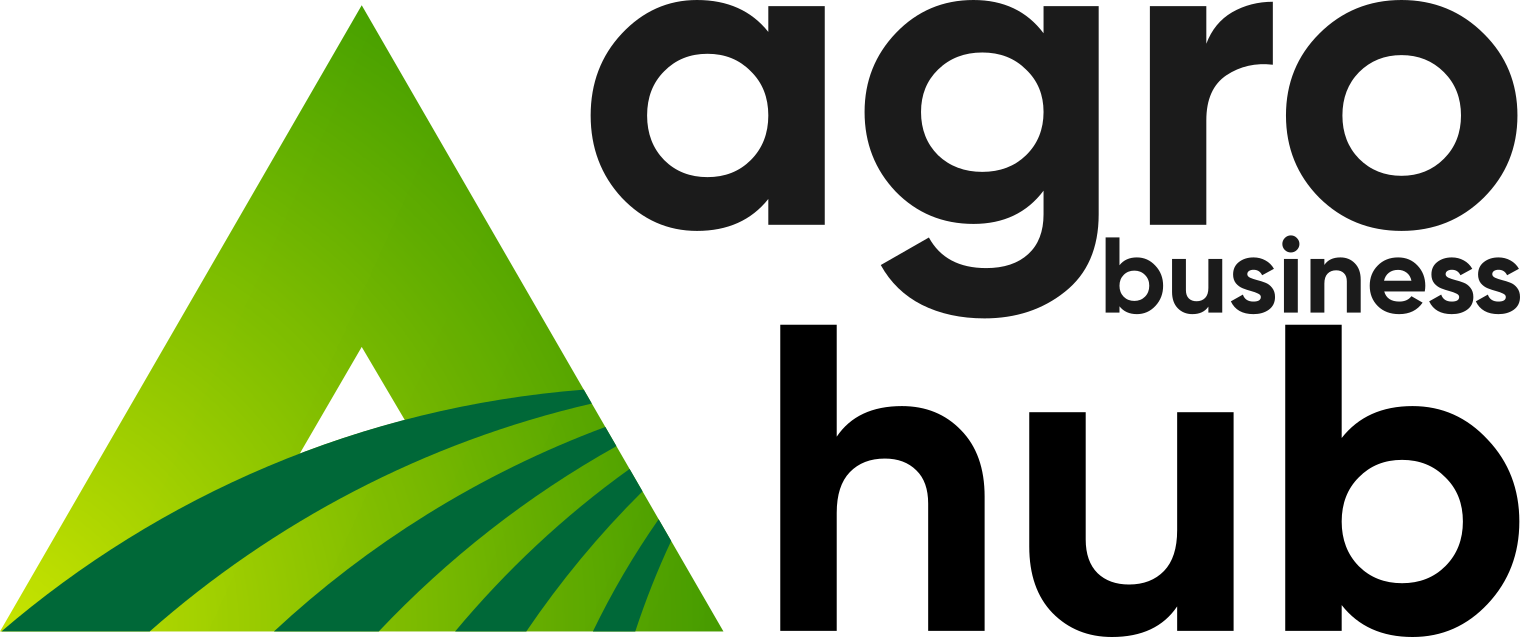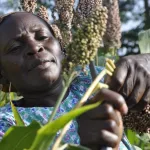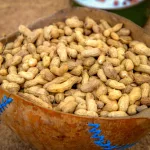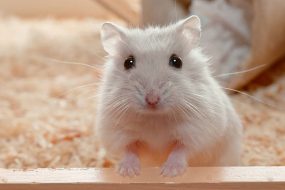Have you ever wondered how a farmer keeps track of the number of animals in their herd? The task of counting livestock has evolved significantly throughout history, from rudimentary manual methods to advanced technology-driven systems. In this article, we embark on a journey through time to uncover the innovative techniques that farmers have employed to count their livestock.

Ancient Beginnings: Manual Counting
In the distant past, farmers had to rely on sheer manpower and rudimentary tools to accomplish the daunting task of counting their livestock. Picture a shepherd standing amidst a flock of sheep, painstakingly counting each animal one by one. It was a time-consuming and, at times, an error-prone process.
Read, Also >>>>>>> Discover The 20 Livestock Management Software in Modern Livestock Farming
As human societies evolved from nomadic tribes to settled agricultural communities, so did the methods of counting livestock. One of the earliest techniques involved physically counting each animal as they grazed or were corralled for the night. Imagine a farmer or herdsman keeping a mental tally as they moved through their herd, ensuring that no sheep, cattle, or goats were unaccounted for. While this method worked for smaller herds, it became increasingly impractical as farming practices expanded.
The Abacus: An Ancient Aid
The abacus, a remarkable counting tool with its origins dating back to ancient Mesopotamia, eventually found its way into the hands of farmers. Although not specifically designed for livestock counting, the abacus provided a more efficient means of keeping track of numbers. This simple yet ingenious device consisted of a series of rods or wires with beads that could be moved back and forth to represent quantities. Farmers adapted it for various purposes, including tracking livestock.

Imagine a farmer sliding beads on an abacus, each movement signifying another animal counted. While not as labor-intensive as manual counting, it was still far from the automated systems we have today. Nonetheless, the abacus represented a significant leap in the evolution of livestock counting techniques, making it easier for farmers to manage their herds with greater accuracy and speed.
In the next section, we will delve into the livestock counting methods of the Medieval Era, where tally sticks and knots took center stage in the farmer’s inventory management toolkit.
The Medieval Era: Tally Sticks and Knots
As history marched forward into the Medieval Era, farmers continued to innovate their methods for counting livestock. This period saw the emergence of two distinctive techniques: tally sticks and knots, both of which played pivotal roles in the farmer’s inventory management toolkit.
Tally Sticks: Wooden Records of Livestock
Tally sticks were a prevalent method of livestock counting during the Middle Ages. These were essentially wooden sticks or rods with notches or carvings representing specific quantities of livestock. Each time a farmer acquired or sold an animal, they would notch the tally stick accordingly. This straightforward yet effective method allowed farmers to keep a running record of their herd’s size without the need for complex calculations or written documentation.

The use of tally sticks was not limited to livestock alone; they were employed in various aspects of medieval record-keeping. What made tally sticks particularly useful was their durability. They were resistant to damage from moisture and insects, ensuring that the recorded data remained intact for an extended period.
Knotted Cords: The Quipus of South America
While tally sticks were prevalent in Europe, a different livestock counting method, known as “knotted cords” or “quipus,” was employed in other parts of the world. The quipu system was particularly prominent among the indigenous cultures of the Andes region in South America.
Quipus consisted of cords made from llama or alpaca wool, with knots of various sizes and positions along the cords. Each cord and knot combination represented specific information, including livestock counts. These quipuses served as a means of recording not only livestock numbers but also other aspects of their society, such as taxation and census data.
The use of quipus in South America highlighted the ingenuity of different cultures in developing practical counting methods suited to their specific needs and environments.
Medieval Innovation
The Medieval Era was a period of significant innovation in livestock counting techniques. Tally sticks and quipus represented two distinct approaches to the same challenge—keeping an accurate tally of animals. These methods, while rudimentary by today’s standards, were essential tools for farmers of the time. They demonstrated humanity’s ongoing quest to find practical solutions to everyday challenges, and they laid the groundwork for the more advanced counting methods that would emerge in the centuries to come.
In the following section, we’ll explore how the Agricultural Revolution and the Industrial Age brought about new advancements in the way farmers counted their livestock.
The Industrial Revolution: Manual Tools Meet Innovation
The Industrial Revolution marked a pivotal moment in history, not only for industry and manufacturing but also for agriculture and, consequently, livestock counting techniques. During this transformative period, manual counting methods met with groundbreaking innovations that would forever change the way farmers managed their herds.
1. The Advent of Mechanical Counters
One of the notable advancements of the Industrial Revolution was the development of mechanical counting devices. These handheld gadgets, often referred to as “clickers” or “hand counters,” offered a simple yet effective way to tally livestock numbers. A farmer could press a button or lever on the device with each animal counted, producing an audible click. This audible feedback not only aided in counting accuracy but also made the task less tedious.
Mechanical counters were particularly valuable when managing larger herds. They streamlined the counting process and reduced the likelihood of errors that could arise from manual tallying. While basic by today’s standards, these devices were a significant leap forward in livestock inventory management during the 18th and 19th centuries.
2. The Power of Written Records
As literacy rates increased and paper became more accessible, written records also became an essential part of livestock management. Farmers began to maintain written ledgers where they recorded details about each animal in their care. These records included information such as the animal’s breed, age, and health status, in addition to its count.
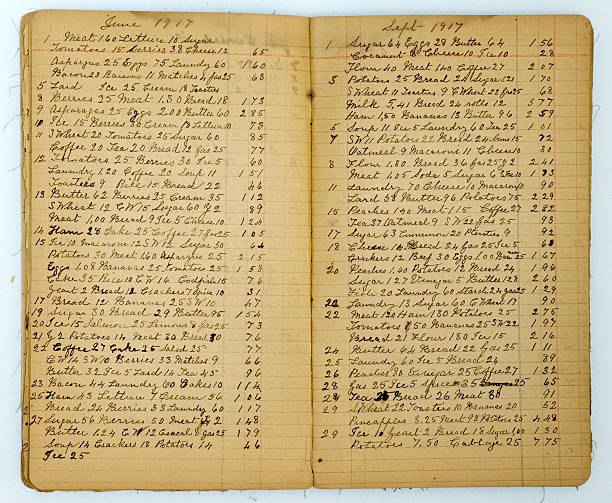
The shift to written records allowed for greater organization and precision in tracking livestock. It also facilitated better decision-making regarding breeding, health interventions, and sales.
3. Innovations in Animal Identification
The Industrial Revolution also saw the emergence of new methods for marking and identifying individual animals. Branding, for example, became a widespread practice where a unique symbol or mark was burned onto an animal’s hide. This branding not only served as a form of ownership but also helped in counting livestock during roundups.
4. Challenges and the Road Ahead
While the Industrial Revolution brought about significant improvements in livestock counting methods, it also presented challenges. The rapid urbanization and growth of industrial centers led to a shift away from traditional farming practices and rural life. This transition meant that many farmers had to adapt to new environments and ways of managing their livestock.
In the following sections, we will explore how the Digital Age and the advent of modern technology would further revolutionize livestock counting and management, making it more accurate, efficient, and accessible for farmers.
The Digital Age: Technology Takes Over
The Digital Age, characterized by the rapid advancement of technology and its integration into various aspects of life, ushered in a new era for livestock counting and management. During this period, farmers saw a transformation in how they tracked their animals, thanks to the proliferation of computers, software solutions, and electronic tracking devices.
1. The Rise of Computers and Software
In the latter half of the 20th century, computers became commonplace on farms. Farmers quickly recognized their potential for streamlining record-keeping and inventory management. Spreadsheets and database software allowed farmers to create electronic records of their livestock, making it easier to track animal numbers, health data, and breeding records.
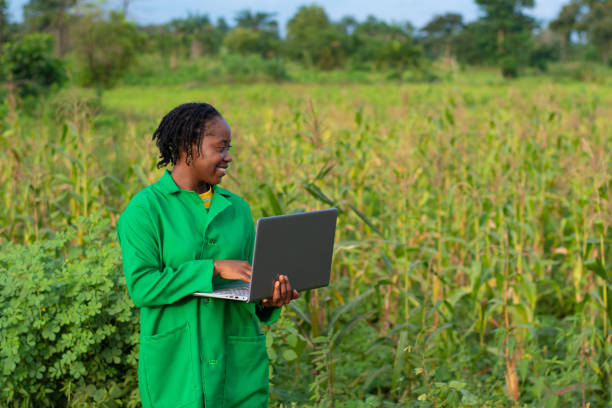
These digital tools offer several advantages. They reduced the risk of manual errors in counting and data entry, enabled quick and efficient record retrieval, and facilitated data analysis to inform decision-making. Farmers could now access a wealth of information about their livestock at their fingertips.
2. Electronic Ear Tags and RFID Technology
One of the most significant breakthroughs in livestock counting and tracking was the adoption of electronic ear tags and Radio-Frequency Identification (RFID) technology. These innovations brought a level of precision and efficiency that was previously unimaginable.
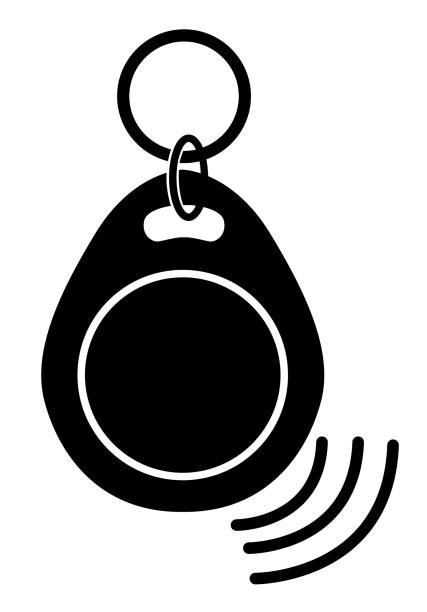
Electronic ear tags are small devices attached to an animal’s ear, each embedded with a unique identification number. RFID technology allows farmers to scan these tags with handheld or fixed RFID readers. This process quickly and accurately identifies individual animals, updating the livestock database in real time.

The benefits of RFID technology are far-reaching. It allows for precise tracking of each animal’s movement and health history. In addition, it simplifies the process of accounting for animals during vaccinations, feeding, and other herd management tasks.
3. GPS and Geospatial Data
Global Positioning System (GPS) technology further enhanced livestock management during the Digital Age. Farmers could use GPS-equipped devices to track the location of their animals, ensuring they were grazing within designated areas or locating lost livestock more efficiently.

4. Remote Monitoring and Data Analytics
The integration of sensors and remote monitoring systems has become increasingly common on modern farms. These sensors could track animal behavior, health parameters, and environmental conditions. Farmers could access this data remotely via smartphones or computers, allowing for proactive management of their herds.
Furthermore, data analytics tools enabled farmers to gain valuable insights from the vast amount of information collected. They could identify trends, detect health issues early, optimize feeding strategies, and make informed breeding decisions.
Precision and Efficiency
The Digital Age has brought unprecedented precision and efficiency to livestock counting and management. Farmers now have access to an array of digital tools and technologies that not only streamline the counting process but also empower them to make data-driven decisions to improve the health and productivity of their herds.
In the following section, we will explore some of the most recent innovations in livestock counting, including the use of drones and smart farming practices, as we continue to push the boundaries of what is possible in modern agriculture.
Present-Day Innovations: Drones and Smart Farming
In the present day, livestock counting and management have entered a new era of innovation and efficiency, thanks to cutting-edge technologies such as drones and smart farming practices. These advancements are revolutionizing the way farmers monitor their herds and make informed decisions to optimize productivity and animal welfare.
1. Aerial Precision with Drones
Drones, also known as Unmanned Aerial Vehicles (UAVs), have become indispensable tools on modern farms. Equipped with high-resolution cameras and sophisticated sensors, drones can provide an aerial perspective that was previously unimaginable. When it comes to livestock counting and management, drones offer several advantages:
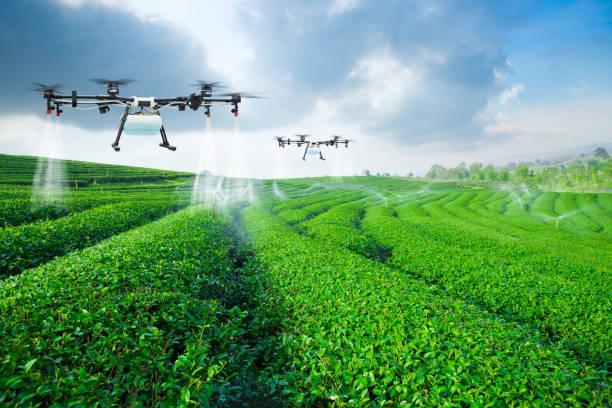
- Efficient Surveys: Drones can quickly cover large areas of pasture, allowing farmers to assess the size and health of their herds in a fraction of the time it would take on foot or by vehicle.
- Accurate Counts: High-resolution cameras and image processing software enable drones to capture detailed images of livestock. Advanced algorithms can then analyze these images to provide accurate counts.
- Health Monitoring: Drones can also be used to identify sick or injured animals within the herd by capturing thermal images or other vital data.
- Pasture Management: Farmers can use drone-collected data to assess the condition of pastures, identify areas of overgrazing, and plan rotational grazing strategies.
- Time and Labor Savings: Drones significantly reduce the labor and time required for livestock surveys, freeing up farmers to focus on other essential tasks.
2. Smart Farming and IoT Integration
The concept of “smart farming” revolves around the integration of Internet of Things (IoT) devices and data analytics into agricultural practices. In the context of livestock counting and management, smart farming offers numerous benefits:
- Livestock Wearables: Animals can wear devices such as smart collars or ear tags with embedded sensors. These devices monitor vital signs, location, and behavior, providing real-time data to farmers.
- Remote Monitoring: Farmers can access livestock data from anywhere, using smartphones or computers. This allows for 24/7 monitoring and early detection of issues.
- Predictive Analytics: Data collected from IoT devices can be analyzed to predict health issues, estrus cycles, and optimal breeding times, enabling proactive interventions.
- Automated Systems: Smart farming technologies can automate tasks such as feeding, watering, and climate control in livestock facilities, improving overall efficiency.
- Environmental Sensors: Smart farms may include environmental sensors to monitor factors like temperature, humidity, and air quality, ensuring the comfort and well-being of livestock.
3. Data-Driven Decision-Making
Perhaps one of the most significant advantages of present-day innovations is the wealth of data available to farmers. With the help of drones and smart farming technologies, farmers can collect vast amounts of data about their livestock and their environment. This data can be analyzed to make informed decisions about herd management, breeding programs, and resource allocation.
Precision, Efficiency, and Animal Welfare
Innovations such as drones and smart farming practices have revolutionized livestock counting and management in the present day. Farmers now have access to unprecedented levels of precision and efficiency, allowing them to ensure the well-being of their animals while optimizing productivity. As technology continues to advance, we can expect further innovations that will shape the future of agriculture and livestock management.
Conclusion: From Abacus to AI
The evolution of livestock counting methods, from the humble abacus to the cutting-edge Artificial Intelligence (AI) systems of today, is a testament to humanity’s ingenuity and determination to simplify the complex task of managing herds. Through the annals of history, each era brought forth innovative techniques that reshaped the way farmers counted their livestock, making the process increasingly accurate, efficient, and data-driven.
Ancient Beginnings: Manual Counting
In ancient times, farmers counted their livestock one by one, relying solely on their own observations and basic tools. The introduction of the abacus marked an early step towards streamlining this process, demonstrating humanity’s innate desire to find more efficient ways of doing things.
The Medieval Era: Tally Sticks and Knots
The Middle Ages saw the emergence of tally sticks and knotted cords as inventive solutions to livestock counting. These methods simplified record-keeping and demonstrated the adaptability of different cultures in developing unique counting techniques suited to their needs.
The Industrial Revolution: Manual Tools Meet Innovation
The Industrial Revolution introduced mechanical counters, making counting more accurate and less labor-intensive. Written records became commonplace, and farmers began to embrace technological advancements as they transitioned from traditional rural life to more industrialized settings.
The Digital Age: Technology Takes Over
The Digital Age brought computers, software solutions, and electronic ear tags into the fold, transforming livestock management. Data became more accessible, and RFID technology revolutionized the way farmers tracked their animals, ensuring precision and efficiency.
Present-Day Innovations: Drones and Smart Farming
In the present day, drones provide farmers with aerial perspectives and data that were once unimaginable. Smart farming practices, driven by IoT integration, allow for remote monitoring, predictive analytics, and automated systems. These innovations empower farmers to make data-driven decisions that enhance productivity while ensuring the welfare of their livestock.
As we look back on this remarkable journey, we see a continuous thread of innovation and adaptation. Each era built upon the lessons and limitations of the past, resulting in increasingly sophisticated methods for counting and managing livestock.
Today, the farmer’s task has been transformed by the power of technology, enabling them to monitor and care for their animals with unprecedented precision and efficiency. From the abacus to AI, the story of livestock counting is a story of human progress, creativity, and a deep-rooted connection to the animals that have been an integral part of our survival and success throughout history.
Read, Also >>>>>>> Discover The 20 Livestock Management Software in Modern Livestock Farming
